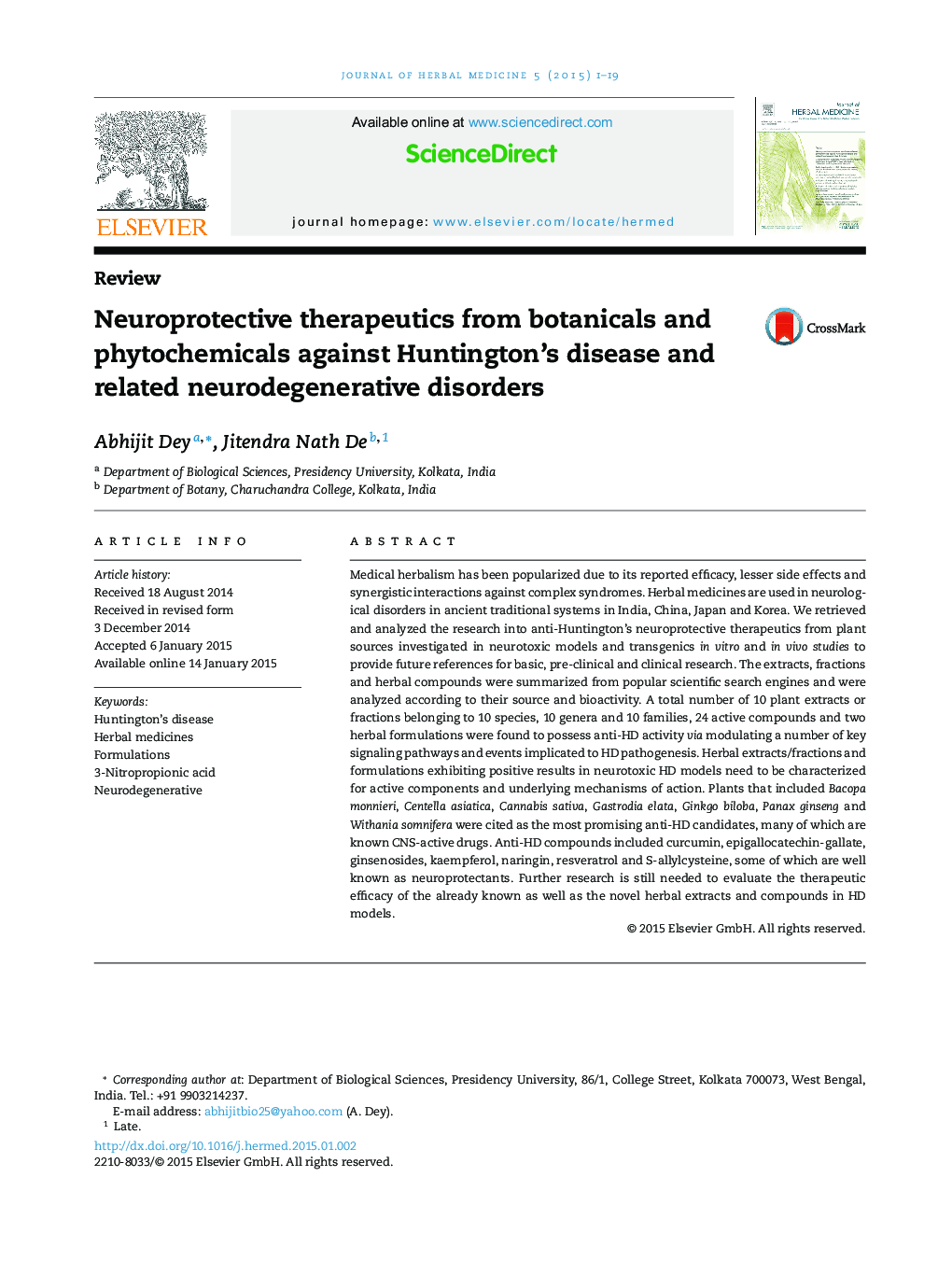| Article ID | Journal | Published Year | Pages | File Type |
|---|---|---|---|---|
| 2484032 | Journal of Herbal Medicine | 2015 | 19 Pages |
Medical herbalism has been popularized due to its reported efficacy, lesser side effects and synergistic interactions against complex syndromes. Herbal medicines are used in neurological disorders in ancient traditional systems in India, China, Japan and Korea. We retrieved and analyzed the research into anti-Huntington's neuroprotective therapeutics from plant sources investigated in neurotoxic models and transgenics in vitro and in vivo studies to provide future references for basic, pre-clinical and clinical research. The extracts, fractions and herbal compounds were summarized from popular scientific search engines and were analyzed according to their source and bioactivity. A total number of 10 plant extracts or fractions belonging to 10 species, 10 genera and 10 families, 24 active compounds and two herbal formulations were found to possess anti-HD activity via modulating a number of key signaling pathways and events implicated to HD pathogenesis. Herbal extracts/fractions and formulations exhibiting positive results in neurotoxic HD models need to be characterized for active components and underlying mechanisms of action. Plants that included Bacopa monnieri, Centella asiatica, Cannabis sativa, Gastrodia elata, Ginkgo biloba, Panax ginseng and Withania somnifera were cited as the most promising anti-HD candidates, many of which are known CNS-active drugs. Anti-HD compounds included curcumin, epigallocatechin-gallate, ginsenosides, kaempferol, naringin, resveratrol and S-allylcysteine, some of which are well known as neuroprotectants. Further research is still needed to evaluate the therapeutic efficacy of the already known as well as the novel herbal extracts and compounds in HD models.
